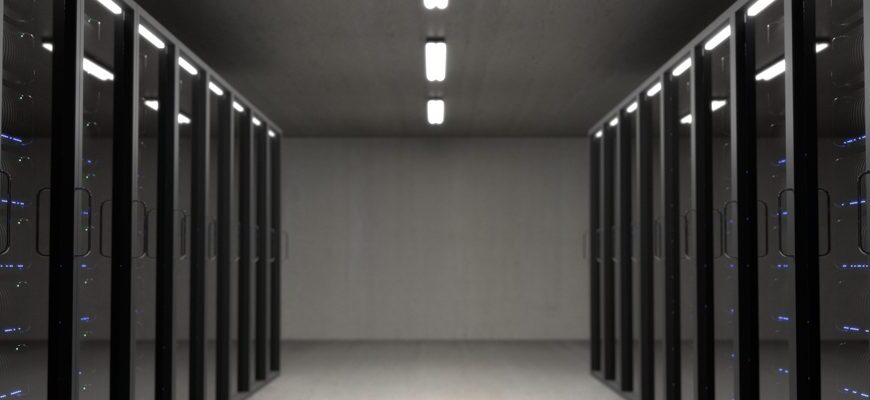- Home
- About us
- Products & Solutions
- Siddharsh Systems & Solutions Private Limited.
- Alliances
- Services
- Insight
- Contact us
- April 19, 2021
- By Animesh Singh
- Siddharsh
The VAR guide: 6 tips on how to design a data centre
The growth in global data traffic, as well as the demand for high computing power and storage, are primary factors driving the increasing demand for data centres, across organizations. In fact, as per a new report by Technavio, the worldwide data centre market size is set to grow by USD 304.87 billion during 2020-2024, rising at a CAGR of over 17%. Clearly, data centres are in high demand across the globe. Additionally, emerging trends such as IoT, cloud adoption etc. are dictating the adaptation of these data centres into the next generation. So, how can you, as a value-added reseller, optimize and design a data centre structure for your clients? Here our experts have put together the best practices to keep in mind when you design a data centre – Plan for the future – Begin by understanding the client requirements – their short term as well as long term goals. The fast pace of today’s technologies means that the demands of a data centre will only increase with time. Hence, data centres must be able to respond to these changing requirements quickly and easily support increased workloads. Plan for the future by answering the following questions – Location – The right location can often determine the performance of your facility. Ensure that your prospective site has a large space that can house racks and larger components such as generators and cooling towers. The infrastructure should be optimized for space and resource allocation, instead of just filling up space with equipment. Floor space – How much space is needed to house the data centre and its infrastructure? What are the future requirements you foresee? While it is not always feasible to allocate floor space in advance, you can make the most of the available space by using flexible and scalable cabinets and racks. They should have adjustable rails, airflow management options, cable support and protection. The benefit here is that these will accommodate the growing requirements from the centre as and when required, etc. Develop performance and cooling strategy – Energy consumption, as you know, is one of the most critical variables for any organization, as data centres are significant consumers of energy. Overall, servers and data equipment make up over 55% of the total energy used, followed by the cooling equipment at 30%. One of the first things you should look at is what type of cooling will be required. Some of the options available are – Air cooling – Many companies use air conditioners or chillers to cool their server racks. While widely used, this is not one of the most efficient methods of cooling. Water cooling – An alternative to air cooling is using water-based cooling systems, which are compact, energy-efficient and, hence, cheaper to operate. Localized cooling – Another option is where a unit is set up for each row – allowing for more precise cooling based on needs of each equipment row. Moreover, you should also ensure a backup plan for your power and cooling requirements. Datacenter components do not respond well to fluctuations of temperature. When these lose power, they require total restarts, leading to downtimes, startup issues and loss of transit data. Usually, organizations make use of backup generators to make sure 100% uptime for their data centres. Manage airflow– Ensuring proper airflow through the data centre can contribute to lower energy costs and higher efficiencies. A good data centre airflow management plan is a great way to keep your facility at the right temperature. Develop an efficient airflow plan by leveraging the strategies below – Plan the main inlet for cool air and outlet of warm air. Set up hot and cold aisles by positioning server racks so that the front of one row faces toward the front of the next row. Install physical barriers between server racks for air containment. Deploy filler panels within each server row to feed chilled air directly to the equipment. Also, choosing the right server racks will help use your equipment properly and ensure ample space for the future. Many new data centres have rows of empty racks that help to facilitate proper airflow until they are filled. Optimize cabling – Improper cable management can be a contributing issue to datacenter downtime. Avoid this possibility by organizing and storing all wiring correctly. One way to manage cables is to label and colour code them to make them easier to track and maintain. Using horizontal or vertical cable managers to untangle and streamline is another method. Ensure security and support – On average, the impact cost of a data breach to an organization is over $150 million in 2020. Many data centres contain business-critical data, making them particularly vulnerable to cybercrime. To counteract this risk, implement strict security protocols for your clients, especially when dealing with cloud applications and on-site data storage. Additionally, ensure physical security measures such as restricted doors, biometric access and enclosed server racks. Automate and monitor – To maintain the performance of your client’s datacenter, it is important to have mechanisms in place that can monitor and report on power, cooling, and networking to inform management and help them plan for future capacity needs. Detailed planning and monitoring can help ensure that the data centre you design has proper airflow and that the equipment is operating at the right temperatures. Besides, it will also help keep costs low, reduce inefficiencies and eliminate wastage for your customers.
- April 19, 2021
- By Animesh Singh
- Siddharsh
Supply Chain Management
It is no news that the ever evolving nature of the technology universe is leading to its increased dynamicity. This has led to a change in the overall lifecycle of technology distribution. Gone are the days when a company was only an end-to-end distributor. Changing conventions and concepts have forced enterprises to adopt newer practices to better serve the value chain. Distribution, at its core was just seen to be a fulfillment component – if consumers had a need, distributors filled it. This was a binary transaction based on the need-delivery model. But today, the digitization of technology has forced distributors to reanalyze this model given the sophistication and adeptness of the services it offers. This has compelled business to shift from their traditional notion of being just distributors to being solution aggregators. When distributors assume the role of solution aggregators, they create solutions that are customized in nature and that help consumers stay relevant in the competitive market. As solution aggregators, Siddharsh makes use of its diverse vendor and product network to achieve this goal. Unlike plain distribution that requires just one to possess basic knowledge of the supply chain, solution aggregation requires acute knowledge of the market and the knowhow to garner elements, streamline complexities and provide the capabilities that amplify these adaptations to assure scalability. At Siddharsh, we relentlessly contrive a mix of products that ensure your success. Moving from outcomes to solutions, we are focused on creating new business models. Business challenges that you face as a result of sprightly technological advancements are overcome by our expertise in steering the accession, interaction, services and delivery. Our integration ability coupled with our industry knowledge and resources help us integrate solutions and foster collaboration between all members of the ecosystem. Our investments and expanded solutions in cloud, networking and security and mobility for IoT help to accelerate your success. To be a solution aggregator yourself, leverage our offerings – training materials and tools to stay ahead of the curve and sell more solutions, click here – SIDDHARSH RESELLER FORM.
- April 19, 2021
- By Animesh Singh
- Siddharsh
The increasing role of AI in the data center
As the world grapples to handle a tsunami of data, data centers are also evolving quickly. Rapid growth in the number of smart connected devices and a huge rise in consumption of data is placing enormous amount of pressure on the underlying data center infrastructure. Data centers have become so complex, that is no longer possible for only human beings to manage this rising complexity, without impacting performance and efficiency levels. A technology like AI can help immensely in helping organizations improve the efficiency of their data centers in a significant manner. Such has been the impact of AI on data centers, that last year, Gartner predicted that by 2020, more than 30 percent of data centers that fail to implement AI and Machine Learning will cease to be operationally and economically viable. Google highlighted one of the first instances of the possible potential of AI in the data center, when it published research that it used AI in the data center to improve the power efficiency of its data center. In a span of just 18 months, Google used its AI powered Google DeepMind system to bring about a 40% reduction in the amount of energy required for cooling, which is equivalent to a 15% reduction in overall PUE overheads. Since then, many firms have followed suit to explore the transformational potential of AI. Handling workloads efficiently: AI can help organizations automate workload management in the most efficient way. With the usage of AI and machine learning, patterns can be detected to learn from past data and distribute workloads across peak periods more efficiently. They can also be used to better optimize disk utilization, server capacity and network bandwidth. This was demonstrated last year by a team of MIT researchers. An AI-based system developed by MIT researchers automatically “learned” how to schedule data-processing operations across thousands of servers — a task traditionally reserved for imprecise, human-designed algorithms. MIT researchers said that by doing so, they could help today’s power-hungry data centers run far more efficiently. The researchers said that compared to the best hand-written scheduling algorithms, the researchers’ system completes jobs about 20 to 30 percent faster, and twice as fast during high-traffic times. Additionally, the system learns how to compact workloads efficiently to leave little waste. The results indicate that the system could enable data centers to handle the same workload at higher speeds, using fewer resources. Staffing: Hiring people with the right skill sets is a massive challenge in the digital era. Gartner, for instance, predicts that by 2020, 75% of organizations will experience visible business disruptions due to gaps in I&O skills (an increase from less than 20% in 2016). AI can play a big role in automating many of the tasks that human agents do today. Energy Efficiency: As seen from the example of Google, AI based systems can play a huge role in better optimizing heating and cooling systems, which in turn can help in reducing electricity costs.. AI can also be used to determine how organizations can best utilize resources, such as the most efficient time for performing certain type of tasks. AI can also be used to help in creating the design for a more efficient data center, and in detecting applications or servers that are rarely used. It can also be used to detect power hungry applications or servers, and recommend ways to move specific workloads to more efficient ones. Security: AI can be used with great impact in a security operations center in a data center. AI can complement current Security Incidents and Event Management (SIEM) systems, by analyzing incidents and inputs from multiple systems, and devising an appropriate incident response system. AI-based systems can improve the security operations centre monitoring and basic L1 jobs can be reduced. For example, when more than 20,000 events per second are logged, it becomes difficult for human beings to monitor these events. AI based systems can help in identifying the malicious traffic from the false positives and help data center administrators handle cyber security threats more efficiently. Proactive management of hardware: AI systems can help organizations in proactively managing the health of their IT infrastructure such as storage, servers or networking equipment. For example, by aggregating logs of different equipment, AI can unearth the root cause of failures and also proactively identify precursors of degradation of equipment. Anomalies, if any, can be reported to address the probable cause of failure, before the equipment fails.
- April 17, 2021
- By Animesh Singh
- Siddharsh
9 Reasons Why Siddharsh Supports Smart Buildings
Some infrastructure improvement ideas focus on national security matters, including safeguarding the power grid against hackers, while others increase the nation’s ability to communicate using today’s technology. It’s hard to believe that many Americans don’t have access to high-speed, futureproof broadband infrastructure. Whether you’re in a city, in a rural area or on tribal land, IT and internet connectivity are now considered a utility—just as vital as electricity—and essential to everything from learning and healthcare to manufacturing and shopping. Smart buildings fit in that category, too. The tools exist to integrate building technology systems for operational efficiency, occupant comfort and automated management based on real-time data. Even if their primary function isn’t to improve sustainability, smart buildings deliver energy and cost savings that come along with better control and integration. Network infrastructure reliability is the key to keeping building systems up and running. High-performance cabling and connectivity act as the nervous system to bring these capabilities to life, even in wireless environments. And providing these 24/7 connections is what Siddharsh is all about. In addition to the energy and cost savings, the excitement around smart buildings is centered on people and improving the human experience. Siddharsh is at the center of this transformation to a connected country—and a connected world. There are many benefits to the deployment of smart building technology, but here are several key ones to note: Better, more efficient building management that allows for safer, more comfortable environments. Automation for increased productivity, lower maintenance costs and optimized building performance over the long term. Easier, faster and more collaborative communication both internally and externally. Data capture and analytics for seamless, informed and cost-effective decision-making. This includes enhanced monitoring of occupancy levels, room status, air quality, etc., which are all even more important amid and beyond COVID-19. Simple deployment of next-gen technology down the road. More and better jobs. While some fear that automation will reduce the number of workers, automation and smart building technology may actually help create more jobs focused on high-value tasks. Improved human well-being by removing common environmental stressors (malfunctioning equipment, space that are too hot or cold, inadequate lighting, etc.) and providing customized, comfortable places to work. Better talent acquisition and retention, with employees making employment decisions based on the features and facilities a workplace has to offer. Improved energy efficiency, which lowers utility bills and operating expenses, conserves resources and makes it easier to keep pace with climate change initiatives.
- April 17, 2021
- By Animesh Singh
- Siddharsh
Building a smart city? Then start with smart buildings
Smart home tech is becoming ever-more-prevalent, as consumers bring increasing numbers of connected devices into their lives. Larger buildings, including office blocks and shopping centres, are also seeing an influx. These initiatives are driven by the consumer or the building owner, tenant or manager. When you think about buildings as part of larger neighbourhoods, which in turn form part of larger towns and cities, these initiatives are being driven from the bottom of the pyramid. Conversely, broader smart city initiatives tend to be driven from top down, by local or national government bodies, often working with utility companies. The general aim of smart cities is to make urban areas more efficient, more sustainable and more attractive to residents and visitors. But a report from ABI found that these top-down-driven smart city initiatives haven’t fully delivered on their aims, despite projects such as smart street lighting and car- or bicycle-sharing schemes being successful in places. This is because bigger projects that require greater integration – perhaps upgrading a city’s power-distribution infrastructure or overhauling its healthcare services – often run into the old barriers of cost and complexity. The report’s authors suggest that linking smart home (ie bottom-up) and smart city (top-down) projects could benefit both sides. Other factors are also driving the development of smarter buildings and cities. Legislation, such as the US Commercial Building Initiatives and the EU’s Energy Performance of Buildings Directive (EPBD), is increasing localised focus on limiting energy usage and greenhouse gas emissions. When you consider that commercial premises account for more than a third of US electricity consumption, it’s easy to see why these buildings in the spotlight. And with the right push from the businesses, local authorities and governments who have an interest in sharing data to monitor and control the built environment, we’re likely to see an increase in smart buildings that play a part in realising truly smart cities. Let’s look at a couple of examples of how smart building initiatives can add up to create smarter urban environments and solve pressing challenges. The renewable energy issue If we’re to significantly increase the amount of energy we generate from renewables, our power grids themselves will need modernizing to accommodate it. The major challenge is to balance supply and demand, thereby avoiding outages when consumers’ thirst for electricity is greater than what the sun, wind and other renewables are generating at that moment in time. One of the biggest changes required to power grids is being driven by the decentralisation of production. Traditionally, grids have had a fairly straightforward architecture that distributes power from large-scale generators to cities, then to neighbourhoods and finally to each building. To keep things running smoothly, the utility companies increase or decrease production to match fluctuating demand from consumers. Once you start feeding in energy from individual buildings, things become more complicated. Predicting the output of a large hydro or fossil fuel generator can be done relatively reliably. But the output of a small photovoltaic installation on a residential roof can be affected by localised weather conditions. As a result, maintaining that delicate balance of supply and demand across the whole grid becomes hugely more complex. And while the existing infrastructure is capable of handling small amounts of variable renewable energy, when this share grows, the companies involved in operating our power grids need to look at different solutions. Smart buildings: helping tackle the power grid challenge You might be wondering what all of this has to do with smart buildings. With more of these buildings being fitted with solar panels, so they are contributing to this power grid management challenge. But the good news is that as well as being part of the problem, they also provide new solutions. These include energy storage, smart appliances, electric vehicle charging and demand-response management, using connected thermostats. While these technologies should help homeowners, tenants or building managers to drive down their energy bills, the bigger impact could ultimately be for power companies, who can harness these capabilities to address the challenge we’ve been outlining. And this is why utility businesses could well become a major player in the push to turn more buildings into smart buildings. For example, they could offer consumers reduced tariffs in return for control over when they use their appliances, charge their electric cars or consume the stored energy in their domestic battery. Smarter care for an ageing population The power grid isn’t the only place where smarter buildings can play a role in creating smart cities. Care for the elderly is another. With an ageing population, pressure on care homes and other specialised medical facilities is growing, and the bill for providing increased amounts of care is typically picked up by a city’s authorities. At the same time, many individuals are keen to remain in their own homes and stay independent for as long as possible. These are some of the reasons why e-health and domestic assisted living solutions should be important parts of smart city strategies. And in a lot of cases, the connected home is the perfect touchpoint. Possibilities include linking up people’s lighting and appliances to their care providers, so that they can ensure the person is remaining mobile. Wearables that detect if a person falls over are another example. Add smart locks to the front door, to make it simpler for people with reduced mobility to get care. And provide in-home access to doctors and other medical staff, via an easy-to-use tablet or phone app. All of this can make it easier for elderly people to remain in their own homes while receiving tailored, high-quality care. And it’s why we expect to see city authorities starting to throw their weight behind these healthcare platforms or subsidising the technology, instead of expanding the provision of conventional residential care. Linking smart buildings to create smarter streets, neighbourhoods and cities By joining forces, residents and businesses can extend the value of their smart home or smart building investments, thereby helping create smart cities from
- April 17, 2021
- By Animesh Singh
- Siddharsh
Siddharsh – A Brand In Making
The journey of Siddharsh began with a vision of providing innovative, future-ready high quality certified connectivity products and solutions. Today, we are at the forefront of shaping networks for ever-growing demands of various industries like Enterprises (PSUs and Govt. sectors), Telecom service providers, Cloud service providers, Smart cities, and realty sectors. Our core strength lies in providing innovative products and solutions – fiber optic cable, data center solutions, and structured cabling solutions. Our products are designed for Interoperability, Convergence, Security, Emerging global standards & cross-industry needs for a global market in various domains. With our stronghold on the business and constantly upgrading of the technology, we have been able to offer customized products for some big and reputed organizations like Cable harness, High density for ISRO, ip67 rating box for Infosys, Optical-IP conversion for Google, Cabling solutions for compatibility needs for Foxconn, etc. We partner with clients, organizations to understand and develop a custom data center cabling solution to cater to all of their present and future infrastructure needs. Meeting the networking needs of different industries, we take pride as one of the most trusted and reliable names in offering high-quality Cat6A cables that offer enhanced performance in the transmission of high-speed data, voice, and video signals (both digital and analog) over LAN. We have been leading Cat6 cable manufacturers in India offering the best quality as per the set industry standards. What wins us the game is our strict quality control, fast turnaround times, emphasis on reducing TCO (total cost of ownership) to a customer, offering customized end to end solutions, customer certification support for special site requirements. All our products- fiber optic cables, Cat6A cables, etc. come with 25 years performance warranty and 5 years guarantee. During a short span of 6 years, we have catered to small, medium and big enterprises with our dedicated product line and today we have a PAN India presence with certifications from all the leading organizations and soaring high on the success path we envisioned for us and our clients and associates.
- April 17, 2021
- By Animesh Singh
- Siddharsh
The Importance And Choice Of Fiber Tools For System Integrators
Siddharsh offers totally integrated solutions to its clients and system integrators, which helps them avoid approaching different vendors and purchasing each component separately. Our amazing range of products serves the networking needs of various industries like Education, Information Technology, the Government, and Hospitality, besides meeting the needs of international clients in India for the Global innovation center. We provide a strong support base for system integrators. The importance and usefulness of a systems integrator cannot be undermined. As compared to offering expensive and unique components, we believe in cost-effective and preconfigured solutions Various tools are required for the installation and maintenance of networking products or their use in system integrators. Why are fiber optic tools important? Tools are extremely important to install, maintain, and troubleshoot networking products. Fiber optic networks are extremely delicate and complex to install, maintain, and troubleshoot. Specific tools need to be used which are meant for a particular purpose to ensure fiber optic cables are not damaged and high performance is achieved. There are different procedures to be adapted in order to get effective results and it is imperative to understand these basic, but golden rules, in order to get the best results. What are the different kinds of fiber optic tools for testing and installation? Splicing Tools There are fiber optics that need to be melted together, for which splicing tools are required. There are different kinds of splicing tools for fiber optics that are available in the market. They are heat oven, fiber splice protection sleeves, fusion splice, optic lever, and many others. Mechanical and fusion splicing are the two kinds of splicing that can be done. Two fiber ends of an optic cable are held together in order to have a light pass from one fiber to another. This kind of process is managed by mechanical tools. Infusion splicing, glass ends of the fiber are fused or welded together to ensure that there is a continuous connection and very little light is lost Fiber Inspection or Fiber Tools Fiber tools are used for the production and troubleshooting of fiber optics, to ensure that they work continuously and effectively. There are various aspects of a cable that can be tested; the amount of power that is being transmitted, breakages, and any other aspect that needs to be checked. There are different kinds of inspection tools that can be used and some of them are faulty locators and optical identifiers. Cleaning Tools In order to transmit light without any obstruction, it is important to ensure that the fiber cables are free from dust, dirt, oil, and other constraints. The main areas that require cleaning are connectors and ferrules. No cables should be touched with bare or naked hands, in order to avoid contamination and damaging of the cables. Alcohol and wipes are the best materials to be used for cleaning. The various kinds of Fiber Optic Tools offered by Siddharsh and their uses: Splicing Machines Splicing Machines like OFS-108, OFS-109, and Fiber Splicing Tool Kits are used for high-speed fiber fusion. Fiber Strippers and Fiber Jacket Strippers These tools are used to remove the jacketing, from 1.6 mm to 3.0 mm. The coating is stripped to expose the fiber cladding. Cutters There are two kinds of Cutters – Fiber Cable Yarn Cutters and Fiber Tubing Cutters. Cutters are used to cut the members inside the Fiber Jackets and the Metal Central Tube. Fiber Optic Adapters They are used to join two fiber optic patch cables together and come with superior low loss performances and high repeatability. Slitters Splicing Machines like OFS-108, OFS-109, and Fiber Splicing Tool Kits are used for high-speed fiber fusion. Splicing Machines 3C3 offers Universal Round Fiber Cable Slitters, Armored Cable Slitters, and Longitudinal Cable Sheath Slitters and is used for jacket removal of PE, PVC, and Rubber High Precision Cleavers They are used to cleave fibers quickly, easily, and effectively and are a perfect aid to any field splicing systems. Features of Tools from Siddharsh – Why choose us for your Tools? Our tools are used by several manufacturers across various industries, thus making them flexible and user-friendly. The prices are so cost-effective that customers are pleasantly surprised and delighted with their effectiveness and the value-add that they bring to the business. These tools are designed in such a way that they meet the challenges that new-age businesses demand. The material of the highest quality is used, thus making our tools deliver excellent and consistent performance, anytime, every time. They are waterproof and moisture resistant and hence they can be used, both indoors and outdoors. When a comparison is made with other products available in the industry, we stand out from the competition for our effectiveness and uniqueness.
- April 16, 2021
- By Animesh Singh
- Siddharsh
Smart Cabling For Smart Buildings
Smart Building Networks have many requirements like flexibility, the ability to scale up or down, Power of Ethernet (POE), Cloud applications and support of Internet of Things. The networks in smart buildings need to support a wide range of applications and devices, from communications and telephony to facility management systems, security and access control, wireless access points and IoT devices. Traditionally, cabling in buildings was equipped with a vertical backbone. It rises through the building and branches off wherever a floor converges and then it would run to individual devices. However, If there comes a change in the designated use of space in the building, recabling involves a lot of work like tearing down the walls or adding the ports. So, a new approach was introduced,using pathways and consolidation points on different floors. This approach offers freedom in developing solutions but the designers need to adhere to fixed routes. This has made designing, configuring and reconfiguring networks more easier and suitable for smart buildings. Fibre or copper? Which is best for Smart buildings? Fibre is the best solution wherever the highest speeds and lowest latency are required but not every connection in a building needs the highest possible speed. Over 100m distances, Cat.6A cabling supports speed up to 10GB/s which is sufficient for most in-building applications. Apart from speed and latency, there are other criterias to be considered. One reason why fibre is utilised is because of the fact that it can carry data over considerable lengths whereas copper’s physical resistance means its use is limited to shorter lengths. A Fibre based LAN goes with a number of costly elements like UPS power, floor space, data grounds and cabling closets. Fibre uses fewer electrical components, eliminating potential difficulties related to interference. It doesn’t mean that fibre isn’t affected by other kinds of interference. If light sources are not monochromatic, pulse interference may occur. Copper isn’t excessively troubled by interference. It is very important to take great care when installing copper as well as fibre but copper tends to be more cost effective when it comes to maintenance and rerouting. Copper supports good devices but an All-Fibre Lan would require hardware and equipment upgrades that may boost fibre adoption costs. Therefore, both fibre and copper have their pros and cons depending upon the specific requirements. Fibre and copper solutions will always exist side by side. Each is used in applications where they add good value with a price point that makes sense for the business. Opting for ‘just adequate’ cabling can affect performance, but installing the highest performing cable every inch of the network is costly and pointless. It is always good to consider the cost and efforts related to maintenance, installation configuration and reconfiguration. Taking time to select the perfect type and quality for different parts of the network pays-off in the long run.











